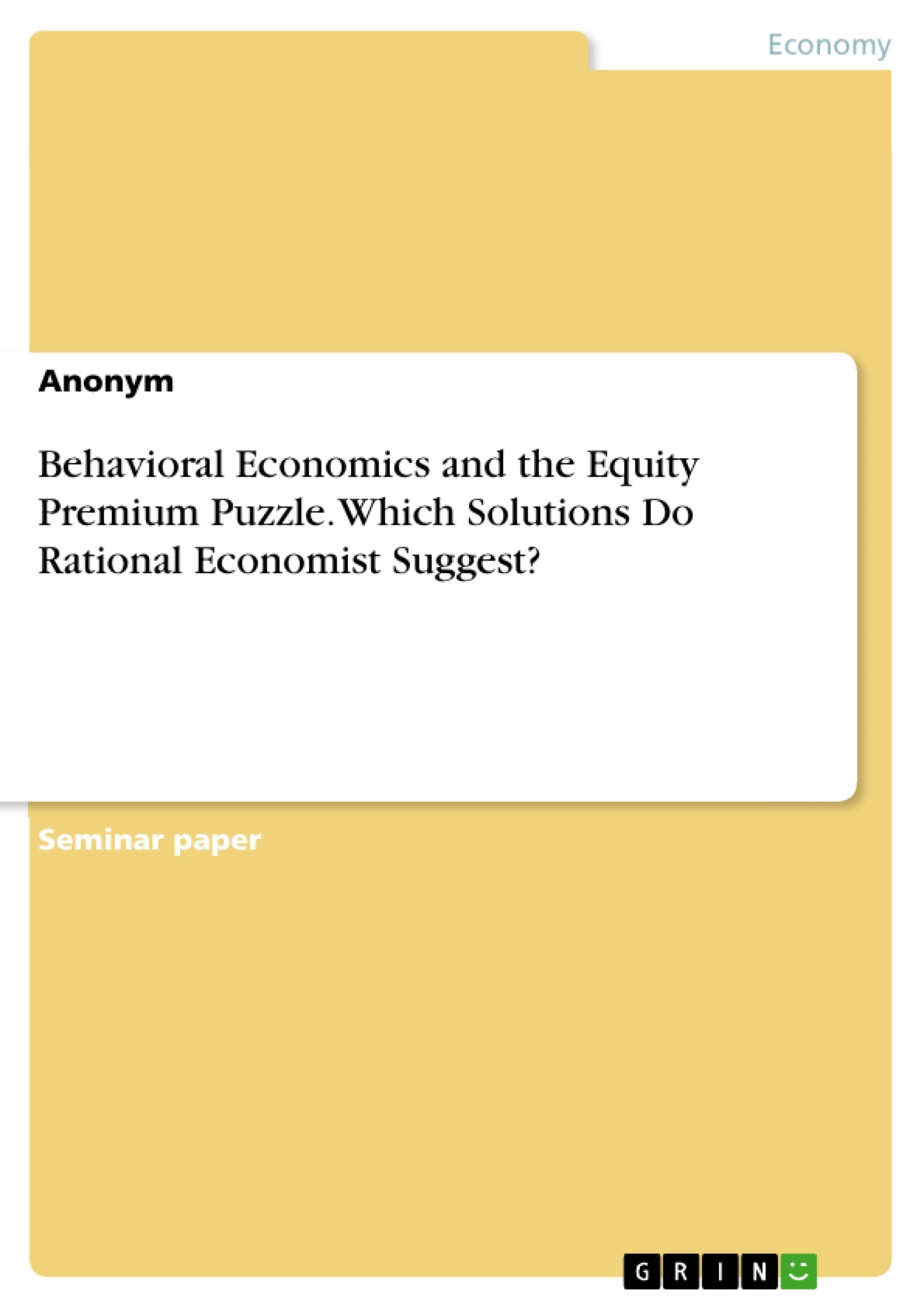The work investigates the Equity Premium Puzzle as described by Siegel and Thaler in 1997. Investigations in the thesis are centered around the question of how behavioral economics can explain the anomalies of stock markets and the equity premium.
As the research question implies, this work will examine solutions of the puzzle suggested from both the field of rational economics and behavioral economics. Due to a large number of various approaches to explain the puzzle over the past 30 years, this work will concentrate on a selected number of suggestions from various economists. I will examine assumptions and conditions of the solutions suggested, and analyze key theories applied in the resolutions. The quantitative foundation of models analyzed in this work will not be examined, as this would require detailed statistical and mathematical considerations. The work is structured as follows. I will to begin with outline the initial puzzle stated by Mehra and Prescott in 1985 and analyze key assumptions of their equilibrium model. Different resolutions of the puzzle suggested by rational and behavioral economics will then be examined, followed by an investigation of the empirical evidence behind the proposed solutions. A discussion will follow, and the author will reflect on the robustness and relevance of the puzzle. A conclusion will sum up the key elements of the work.
Inhaltsverzeichnis (Table of Contents)
- Introduction
- The Equity Premium Puzzle
- Investigation from a rational perspective
- Investigation from a behavioral perspective
- Empirical evidence
- Discussion
Zielsetzung und Themenschwerpunkte (Objectives and Key Themes)
This work aims to investigate the Equity Premium Puzzle, a discrepancy between the return of stocks and a risk-free investment. It examines explanations from both rational and behavioral economics, exploring the key assumptions, conditions, and theories applied in various proposed solutions. The primary focus is on understanding how behavioral economics contributes to explaining the puzzle and comparing it to solutions offered by rational economics.
- The Equity Premium Puzzle
- Rational economic explanations for the Equity Premium Puzzle
- Behavioral economic explanations for the Equity Premium Puzzle
- Empirical evidence related to the Equity Premium Puzzle
- Robustness and relevance of the Equity Premium Puzzle
Zusammenfassung der Kapitel (Chapter Summaries)
- Introduction: This chapter provides a brief overview of the Equity Premium Puzzle, highlighting its significance and the need for further investigation. It introduces the research question that drives the work and outlines the structure of the following chapters.
- The Equity Premium Puzzle: This chapter delves into the initial equilibrium model proposed by Mehra and Prescott (1985) to calculate the return of equity and risk-free investments. It examines the key assumptions of their model, analyzing its robustness and limitations in explaining the observed premium. The chapter then outlines solutions proposed by both rational and behavioral economics in separate subsections.
- Empirical evidence: This chapter explores the empirical evidence supporting or refuting the various solutions proposed for the Equity Premium Puzzle. It analyzes data from real-world markets and assesses how well different theoretical models align with observed market behavior.
- Discussion: This chapter critically analyzes the findings presented in previous chapters, focusing on the strengths and weaknesses of different approaches. It discusses the implications of the Equity Premium Puzzle for both financial theory and practical investment decisions.
Schlüsselwörter (Keywords)
The key keywords and focus topics of this work include Equity Premium Puzzle, risk premium, rational economics, behavioral economics, equilibrium model, consumption growth rate, risk aversion, disaster risk, market crash, empirical evidence, and robustness. The study explores the interplay of these concepts in understanding the persistent discrepancy between stock returns and risk-free investment returns.
- Quote paper
- Anonym (Author), 2018, Behavioral Economics and the Equity Premium Puzzle. Which Solutions Do Rational Economist Suggest?, Munich, GRIN Verlag, https://www.grin.com/document/1010174



